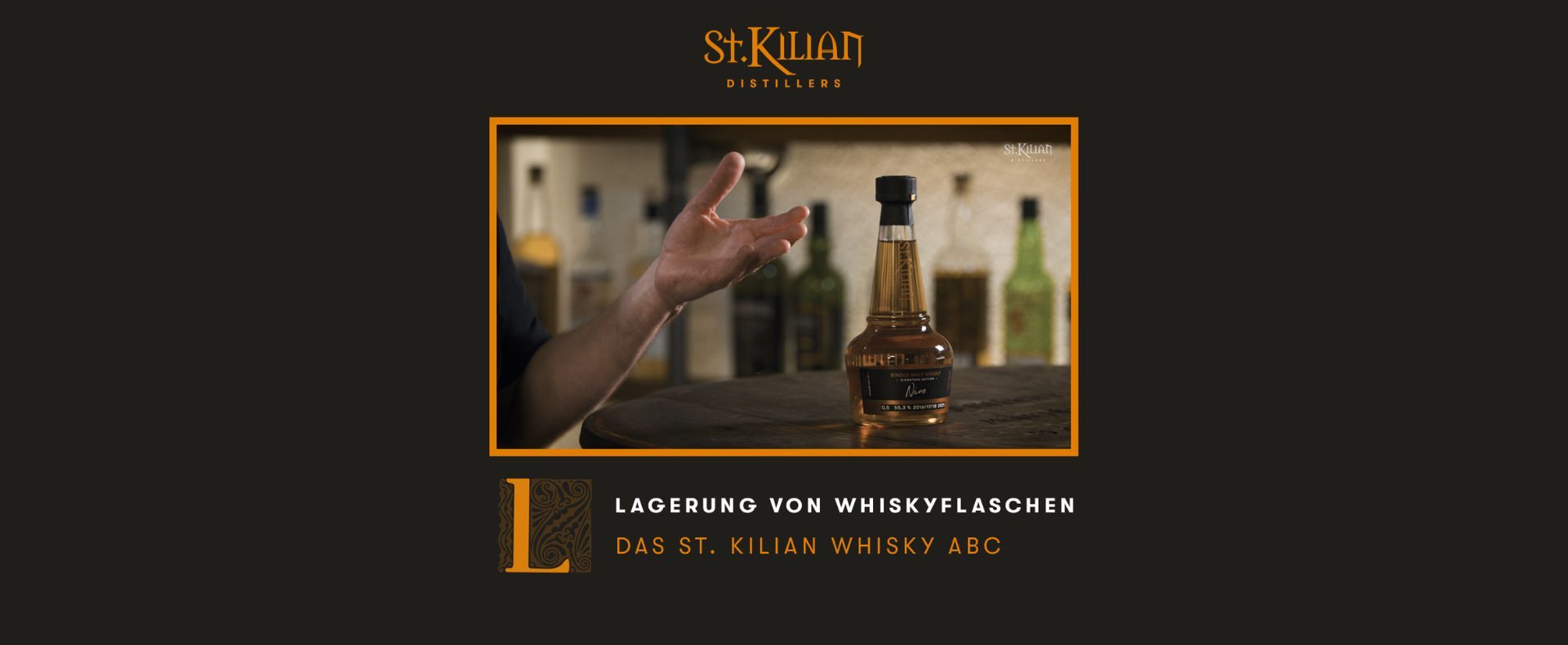L – like storage of whisky bottles

How do you store whisky bottles correctly?
Many whisky enthusiasts ask themselves this question, and the answer is clear: the bottles should be stored upright, not lying down!
Why should the whisky bottle be stored upright?
According to the law, whisky must contain at least 40 per cent alcohol by volume (ethanol), although our whiskies generally have an alcohol content of at least 46% by volume. . If a whisky bottle is stored horizontally, there is a risk that the high alcohol content will corrode the cork and release undesirable flavours into the whisky. In contrast, the alcohol content of wine that is stored horizontally in the bottles, up to 14 or 15 % vol., is too low to damage the cork during storage. In addition, when stored horizontally, the alcohol can dissolve the adhesive that fixes the cork to the closure over time and also release negative flavours into the whisky.
Should the whisky bottle be protected from sunlight?
In any case! The high-energy UV radiation from sunlight damages the flavour compounds in the whisky. This intense energy can cause chemical reactions with the molecules that lead to undesirable changes in aroma and taste. In addition, the molecules responsible for the colour in the whisky are affected by UV light, which can cause the brilliant colour of the whisky in the bottle to fade over time.
How do you protect the whisky bottle from sunlight?
The bottle should be stored in a dark place, shielded from direct sunlight, ideally even in its packaging – if available and opaque.
Does temperature play a role in the storage of whisky bottles?
Yes, the storage temperature of whisky bottles should ideally be cool, between 16 and 18 °C. If the whisky bottle is also only exposed to minimal temperature fluctuations throughout the year, this is even more advantageous.
Should the humidity also be taken into account?
Yes. For collectors in particular, the humidity around their whisky bottles plays a decisive role. Excessive humidity, as is often the case in old cellars, can cause the labels to come off the whisky bottles or even be damaged. The cardboard packaging of the bottle can also be affected. High humidity can therefore reduce the value of a whisky collection.
How quickly should an opened bottle be emptied?
In the literature, guideline values of six months to one year are often given within which an opened whisky bottle should be emptied in order to avoid possible loss of quality. However, this information is not based on scientific principles. It is therefore difficult to estimate from the outset how the flavour of a whisky in an opened bottle will develop over time.
Does the quality of a whisky in an opened bottle always change for the worse?
No, this is not necessarily the case. It is known that due to the larger volume of air in the bottle, flavour compounds can evaporate from the liquid into the gas space and escape from the bottle over time, as the cork closure is not 100% airtight. However, it is difficult to predict whether only undesirable flavours are affected and the good ones remain in the whisky. Our own experience shows that a whisky that had unpleasant sulphur flavours after opening the bottle loses these over time and thus becomes “better”. With other whiskies, however, intense fruit flavours can diminish over time in the open bottle, making the whisky appear less fruity. In addition, the oxidation of flavour compounds in whisky with atmospheric oxygen over a longer period of time can lead to changes in both directions – positive and negative. The individual perception is extremely subjective, as every connoisseur perceives whisky differently.
How can you prevent an open bottle of whisky from remaining on the shelf for too long?
To avoid an opened bottle of whisky lingering on the shelf for too long, the following tip could be helpful: invite some whisky friends over for a cosy evening, open a bottle together, explore the aromas and flavours, exchange philosophical thoughts about it and at the end of the day the bottle is empty – the “problem” is thus solved.